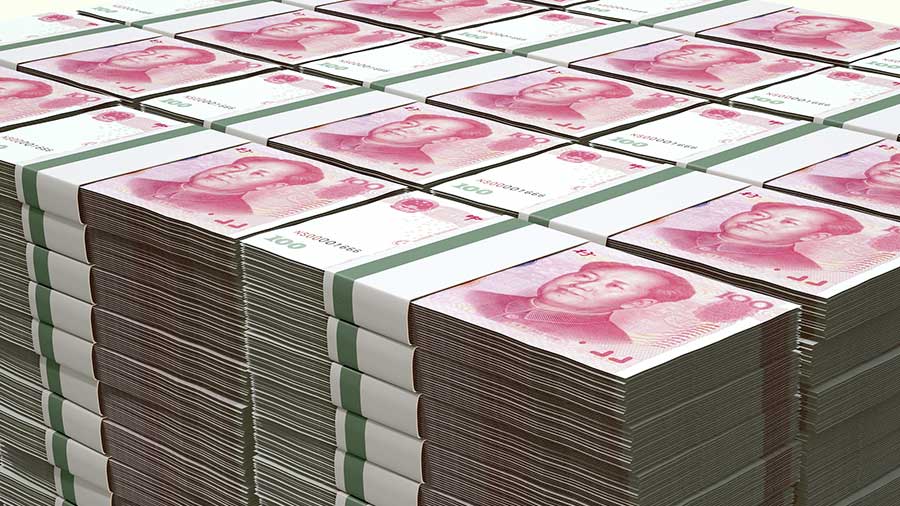How China Structures The Terms & Conditions For Its Belt & Road Loans

China’s Overseas Sovereign Debt Financing Is Built On Sound Financial Principles & Debt Repackaging Strategies
The Financial Times has reported on China’s overseas lending for the period 2008-2019, in an article titled “The Terms Of China’s Massive Loan Spree.”
The report was based on data provided by two US based think-tanks who have commented about how China lends this money. The Peterson Institute for International Economics, a DC-based think-tank, has released a ‘Working Paper 21/7‘ analyzing 100 debt contracts that China arranged with foreign governments, mainly in Africa and South America. The content also includes input from AidData, a research team at the College of William & Mary in Virginia. It should be noted that the reports are LAC based rather than global, while the sample size represents just 5% of China’s total lending during that period.
It should also be noted that the funding for the underlying Working Paper was provided wholly by USA and UK based institutions – including their respective governments. Additionally, the loans analyzed are mostly prior to the 2013 launch of the Belt & Road Initiative. Refinitiv, the world’s leading financial data analysts, note over 2,260 BRI projects post 2013, with project totals in excess of US$4 trillion. None of the Refinitiv data was mentioned in the Petersen Institute’s Working Paper 21/7 study, meaning its findings err on the outdated.
The Petersen Institute also notes that China’s lending during the period in question was mainly conducted by the China Development Bank and Export-Export Bank of China, who provided some US$462 billion in loans during this time. However, as Henry Tillman of China Investment Research points out, while the China Development Bank is the world’s largest development bank by assets, and China’s biggest overseas lender; the loan sample analyzed only included eight CDB loans over the period. That’s not sufficient to be making the critical analysis they have published.
Nevertheless, the Chinese loans mentioned do represent slightly less than the US$467 billion the World Bank delivered over the same period. Although smaller Chinese regional banks have also been involved, sometimes for lending with terms that are outside the scope of the State-Owned Banks, the money typically originates from the two larger Chinse institutions.
However, despite the flaws in the Petersen Institute paper, their observations do provide some background into China’s lending terms and conditions.
China’s lending practices have been subjected to a great deal of misinformation over the years, much of it now discredited. We commented previously on findings by both Chatham House and the John Hopkins University that China’s Debt Trap in terms of its lending policies has been revealed as a myth, and the new US think-tank research bears this out – China’s lending contracts are not much different from those offered by other sovereign creditors.
However, there are differences in that they do not as a matter of unspoken policy seem to be tied to any underlying political criteria. While the World Bank has lent slightly more than China, it has not extended any loans to countries that the United States has issues with – meaning no World Bank loans have been made to countries such as Belarus, Costa Rica, Cuba, Iran, Libya, North Korea, Palestine, South Sudan, Syria, Turkmenistan, and Venezuela among others. Concerning Palestine as one example, the World Bank has not provided any loans to the Palestinian’s, while it has funded 147 projects in opposing Gaza and the West Bank. China in contrast has provided US$15 million to Palestine.

Neither does China make any special exemptions for lower income countries in terms of placing a higher rate of return on loans as a criterion for a higher risk. While China does not, as is common with other sovereign debt contracts make specific referral to the ‘Paris Club’ for debt restructuring, that is because China is not a member state rather than it not wanting to follow global norms. . In fact, the Paris Club – which includes the United States – has been criticized in the past for a lack of transparency in how it deals with restructuring distressed sovereign debt. China’s lack of Paris Club membership has been portrayed as slightly insidious, whereas our previous discussions on the issue show that while China is not a member of the organization and therefore its rules are not applicable, it does in fact follow very similar debt restructuring methodologies.
Although as we have seen, the World Bank and the United States often makes loans based on political issues – extending finance to important or friendly nations or those it wishes to influence – China does the same albeit in a rather different fashion. China includes clauses that mean policy and legal changes by the sovereign nation concerned could count as grounds for cancellation and immediate repayment of the loan, a definition more commonly found in private sector, commercial debt contracts.
Instead, as this is China sovereign debt, it adds a different layer of politics into government-to-government lending arrangements, implying that if elections are held where the preferred China incumbent is not re-elected, Beijing could cancel the loan. This potential scenario has happened – China’s preferred Sri Lankan President, Mahinda Rajapaksa lost the Presidential election in 2015, ushering in a new, less-pro China incumbent. However, China did not enact clauses relating to calling in Sri Lanka’s debt.
This suggests that the Chinese position as concerns the changes of winds in other nations democratic fortunes is viewed with a more pragmatic eye rather than pushing the button for any debt cancellation. Besides – there would be no point in enacting such a clause – the money would already have been dispersed, rendering the clause as a warning bark rather than a potential bite – as many contracts possess.
It is also true that China requires signed NDAs on virtually all its international partnerships – such as vaccines, meaning the think-tanks questioning of NDAs on loans is also somewhat unrealistic. Again, the situation is standard but the underlying – and somewhat unbalanced criticism is that China is somehow trying to invoke a lack of transparency. This is unfair.
To the contrary, China, and especially as planned for sovereign project income streams from the likes of toll roads, railways and so on have been massively delayed due to Covid, has taken a tolerant view on nations with loan repayment difficulties.
An example is Kenya, who rescheduled US$245 million of debt repayable to China in February this year. That debt was accrued because of borrowing to finance the Nairobi-Naivasha Central Rift Valley railway, which has been completed and is expected to be a major income generator. Covid has put those ticket sales way behind revenue forecasts. Under the China rescheduling deal, Kenya will have the next six years to make payments on the suspended debt service costs including a one-year grace period from this June. That compares with the Paris club creditors, who also offered debt-service suspension for the same project. However, the Paris Club offer was just six months of debt-service suspension, a far less generous set of arrangements.
Also not mentioned by the Petersen Institute is the future potential increased liquidity for these loans. They are unlikely to remain on sovereign balance sheets in their current form, as China has already begun the process of converting them into tradeable stock market assets. While these loans were written as bi-lateral, we anticipate that many of these loans will find their way into the global securitization markets, via clever China led structures. Henry Tillman for example, points out the 2019 launch of Bayfront Infrastructure Management in Singapore, a joint venture between Clifford Capital of Singapore and the Asian Infrastructure Investment Bank to begin securitizing some of these infrastructure loans. In 2021, the use of REITS to cash out of BRI infrastructure is now underway and a financial structure that we discussed in the article ‘China To Use REITS To Cash Out Of Belt & Road Initiative Infrastructure‘. Other countries will convert their sovereign debt to REITS to repay the Chinese sovereign loans.

There are also differences between Chinese contracts and those typically used in the West, although these differences are nothing new to international contract lawyers familiar with China. Chinese contracts (other than those agreed with the China Development Bank which are mostly written in English) follow Chinese law. China also states that dispute resolution occurs in China. This is standard procedure for commercial contracts in China and makes sense considering the capital is being provided by China and is being given as a repayable debt.
In practice, certainly in business, Dezan Shira & Associates have found that there is some leeway concerning the Chinese position on dispute resolution. We have successfully negotiated commercial contracts on behalf of clients where arbitration may be located to Hong Kong (which follows the British rule of law, and not mainland China law) or the International Chamber of Commerce in Beijing, whose arbitration protocols also follow the British legal system and have an arbitration program specifically dedicated to the Belt & Road Initiative.
China of course will want a system as watertight as it can be concerning the lending of large sums of its money. The World Bank in contrast refers arbitration to the United Nations International Court Of Justice which sits in the Hague. While this may seem far less risky, it is important to make the distinction between the World Bank – funded by the members of the United Nations, and China, which is a sovereign nation.
That said, China is set on providing arbitration in Hong Kong and has stated as such within its plans for the Greater Bay Area, which is part of the Belt & Road Initiative. In November last year, China’s Supreme People’s Court and the Hong Kong Government signed the ”Supplemental Arrangement Concerning the Mutual Enforcement of Arbitral Awards between the Mainland and Hong Kong SAR”. With the Supplemental Arrangement, Hong Kong is placed in a unique position as a seat of arbitration. This is so because the enhanced enforcement regime not only introduces a simultaneous enforcement mechanism allowing the application for enforcement to be made in both Hong Kong and China, but also empowers mainland courts to grant interim relief against the award debtor throughout the arbitral process. In short – arbitration settled in Hong Kong will be enforceable in mainland China.
It remains to be seen whether China, as the sovereign nation would accept Hong Kong as an arbitration center for sovereign, G2G loans. However, it appears that the mechanism to do so is being put into place. The issue is certainly one that can be discussed with the Chinese government. It would ultimately be odd for Beijing not to recognize Hong Kong arbitration, and this option remains an interesting legal and financial question when negotiating sovereign loans.
Our own views therefore that both in hindsight and the findings of the US think-tanks, the provision of debt financing by China is not problematic and neither has it been.
Research from the Rhodium Group suggests that some 15 countries are now trying to renegotiate Belt and Road related project debt with Beijing, with an estimated US$28 billion of the US$94 billion still to be dealt with. As Rhodium suggest, it is hard to be precise about figures and is possibly a lower estimate as debt negotiations are generally handled in strict confidence, and it is difficult to obtain full transparency of figures. China though appears to have been pragmatic and sensible in what and how much it lends, where and under what terms of conditions. This is borne out by the performance: China’s debt risk is performing at US$1billion for every US$142 billion in BRI assets, meaning a 1-142 chance of problems. That suggests China debt, while arranged slightly differently from that in the West, is well-structured, and to many recipients, more fiscally reasonable with distress mechanisms in place to avoid default.
There are reasons for this: China’s Embassies and Foreign diplomats have done an excellent job of researching and analyzing foreign countries economic indicators and the projects they are being asked to finance. The risk analysis is first rate. Secondly, China does not tend to impose ‘unofficial’ conditions on lending money, whereas as we have seen recently, the United States, EU and UK tend to have a preference to lend to countries ‘sharing the same values’ – a euphemism for democracy. Countries such as Venezuela, Iran, and Syria – among many others – are just cut off from World Bank financing. Third, China knows that its financial lending will be scrutinized, and it wishes to develop a reputation as being globally responsible. Western governments and media may throw brickbats and criticize, but when it comes down to it, China’s policies, at least when it comes to finance, appear fair, reasonable and via the use of REITs can be expected to clear the loan books of China indebted nations on a far earlier than understood timeframe.
Related Reading
About Us
Silk Road Briefing is written by Dezan Shira & Associates. The firm has 28 offices throughout Asia, and assists foreign investors into the region. For strategic advisory and business intelligence issues please contact the firm at silkroad@dezshira.com or visit www.dezshira.com





